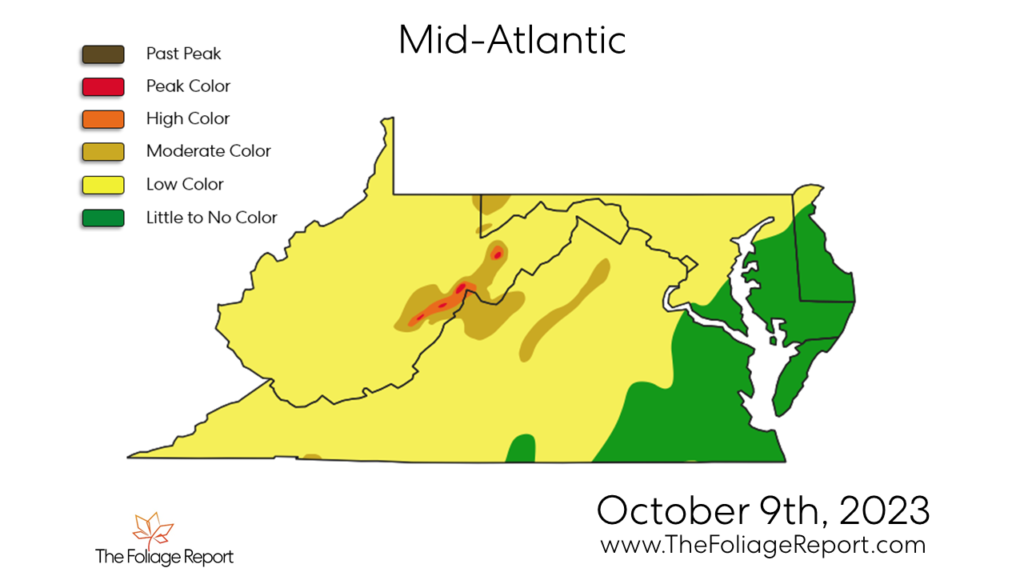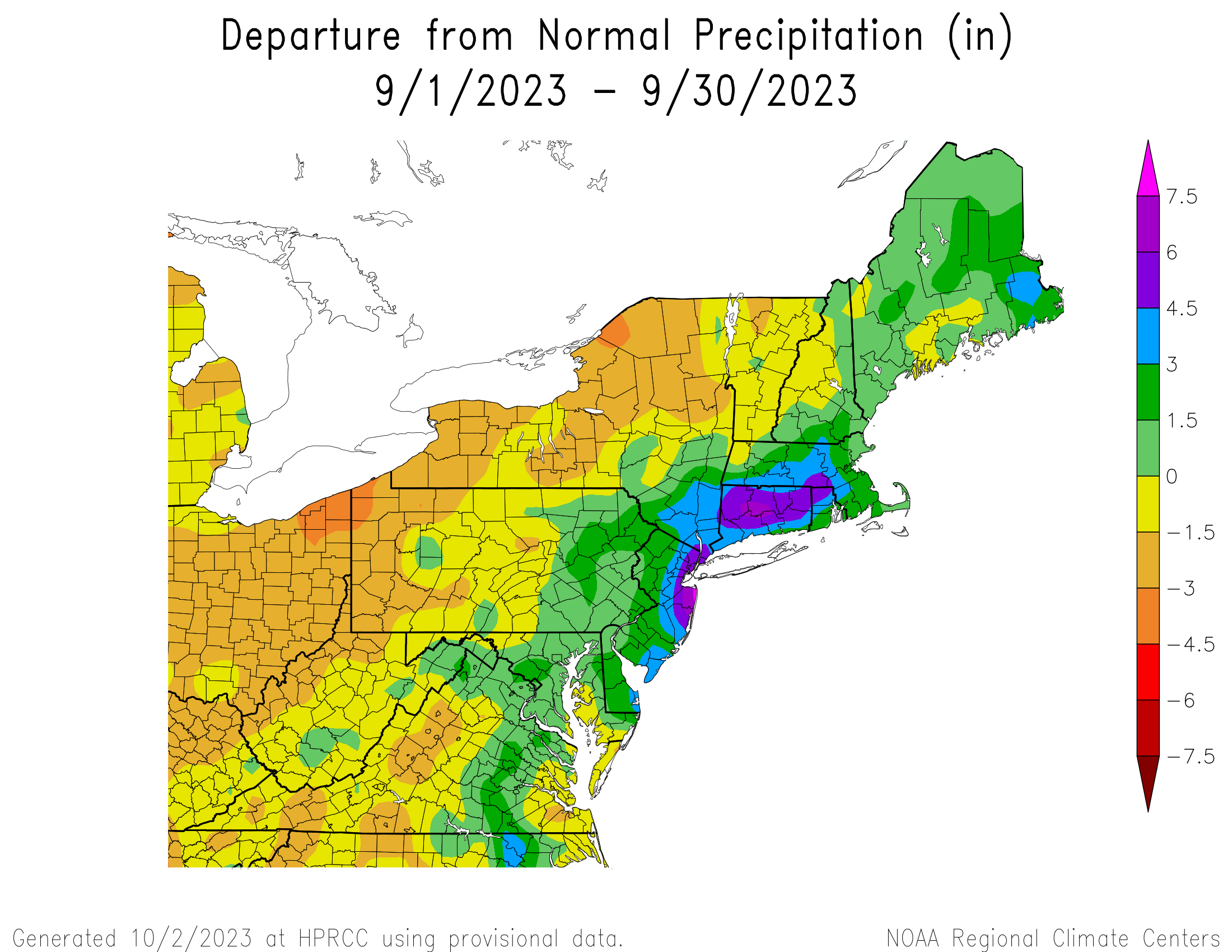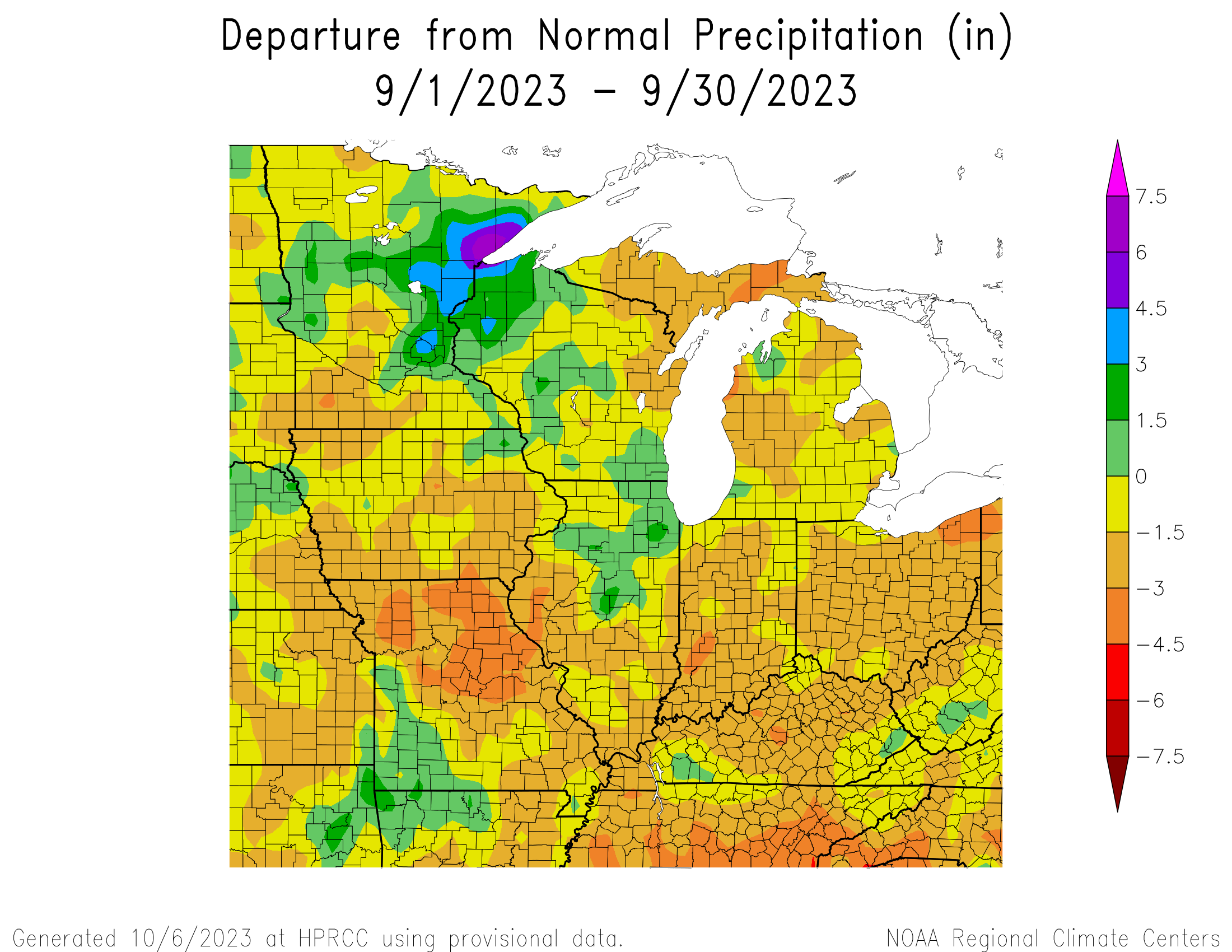

With autumn now kicking into high gear, discussions surrounding fall foliage and when we will begin to see the vibrant colors have begun across the country. Several locations across the Northeast are starting to see high to even peak colors flaring up. Elsewhere, especially nearer to the I-95 corridor, there are still a few weeks before peak foliage is expected. The same can be said across the Midwest, where largely low to slightly moderate color is currently occurring in Ohio, Indiana, and Illinois. So, what are we expecting this year in terms of the foliage forecast? Let’s dive into the details.



Courtesy of The Foliage Report
First off, there are several factors that go into dictating how bright and vibrant foliage can be during the autumn season. Some include the shorter daylight hours and longer nights during this season, but weather plays more of a significant role. The “best-case” scenario for the most vibrant colors in leaves is a wetter growing season (April – June) followed by a “normal” summer season, which means that rainfall and temperature averages for the summer season are nearer to the climatological normal. These optimal conditions also allow leaves to remain on the trees for as long as possible, which is needed for colors to pop for longer in the fall.
 Courtesy of the Northeast Regional Climate Center (NRCC)
Courtesy of the Northeast Regional Climate Center (NRCC)
So, let’s look at how the past several months transpired. The growing season featured below average precipitation for many locations across the mid-Atlantic and Northeast, though New Hampshire and east-central Maine saw significantly above average rainfall (see the graphic above). Temperatures across the region generally also trended near to or just above average throughout the growing season. In the Midwest, the growing season saw significantly below average rainfall (see the graphic below). Temperatures were near to average or just below average across eastern Indiana and much of Ohio, but temperatures touched just above average in Illinois.

Courtesy of the Northeast Regional Climate Center (NRCC)
In terms of how things trended throughout a majority of the summer? Well...very wet conditions were recorded across much of area, whereas locations in the mid-Atlantic saw pockets of below average precipitation (see graphic below). Temperatures during most of the summer months also ran near to normal for most of the mid-Atlantic and up through the I-95 corridor into the northeast. Spots across Vermont, New Hampshire, and even Maine saw temperatures trend up to 1 - 2 degrees above normal.

Courtesy of the Northeast Regional Climate Center (NRCC)
In the Midwest, rainfall conditions improved some from the spring, especially across central and eastern Ohio, while many other locations still saw below average precipitation for the summer season (see graphic below). Temperatures across Illinois, Ohio, and Indiana trended near to or slightly below average throughout the summer season.

Courtesy of the Northeast Regional Climate Center (NRCC)
As we headed into September, very wet conditions persisted, this time in and around the I-95 corridor from NYC to New England (See graphic below). Some areas saw upwards of 4 - 6"+ more rainfall than normal for the whole month. While this kept drought conditions at bay, it might put a damper on the maximum vibrancy of our foliage this year. Temperatures for the month also trended warmer, generally 1 - 2 degrees above average for most, though Vermont, New Hampshire, and Maine saw temperatures reaching towards 4 - 8 degrees above the normal for September. Warmer temperatures during the autumn months can lead to later start times for peak foliage to occur, as well as keep that duration shorter.


Courtesy of the Northeast Regional Climate Center (NRCC)
The month of September brought below average precipitation across Ohio and Indiana, where amounts were generally 1.5 - 3" below normal. Illinois saw a tale of two sides, with central and far northeastern areas of the state seeing amounts near to or above average and the rest of the state seeing below normal rainfall totals. Temperatures region-wide for the month trended above average, generally 1 - 3 degrees above normal for September (see graphics below).


Courtesy of the Northeast Regional Climate Center (NRCC)
So, after all that...Where does this "leaf" us in the end? (see what we did there?). Well, for the most part, fall foliage is largely on track from our current observations, though locations nearer to the I-95 corridor may see peak foliage start a little slower and have a shorter duration. Above average rainfall throughout the summer months and into September may also mean we might not have those vibrant colors in years past. In addition to the potential for muted colors, or at least a variation of muted and vibrant foliage, excessive rainfall can also lead to more fungi on leaves which impacts how long the leaves can remain on trees. These negative impacts will be more likely to occur in the northeast.
Across the mid-Atlantic, below-average precipitation and generally above average temperatures through the growing season and into the summer months are likely to lead to below average foliage conditions with drought conditions still in place (especially across western Maryland and Virginia).
In the Midwest, below-average precipitation and above average temperatures through the growing season for many locations followed by continued drier weather into the summer months may lead to some below average and slightly slower to arrive peak foliage conditions. This is especially the case with drought conditions in place area-wide.
.png)
The U.S. Drought Monitor is jointly produced by the National Drought Mitigation Center at the University of Nebraska-Lincoln, the United States Department of Agriculture, and the National Oceanic and Atmospheric Administration. Map courtesy of NDMC.
Regardless of the forecast to foliage this year, the colors are always a beautiful sight across the region. Here is a map of when we can usually see peak fall foliage in the region. Peak foliage is already being observed in Vermont, northern New Hampshire, northern New York, and northern Maine, which is on track for normal, but keep in mind that locations further south and east may be a bit slower to see peak colors this year. Happy Autumn!
